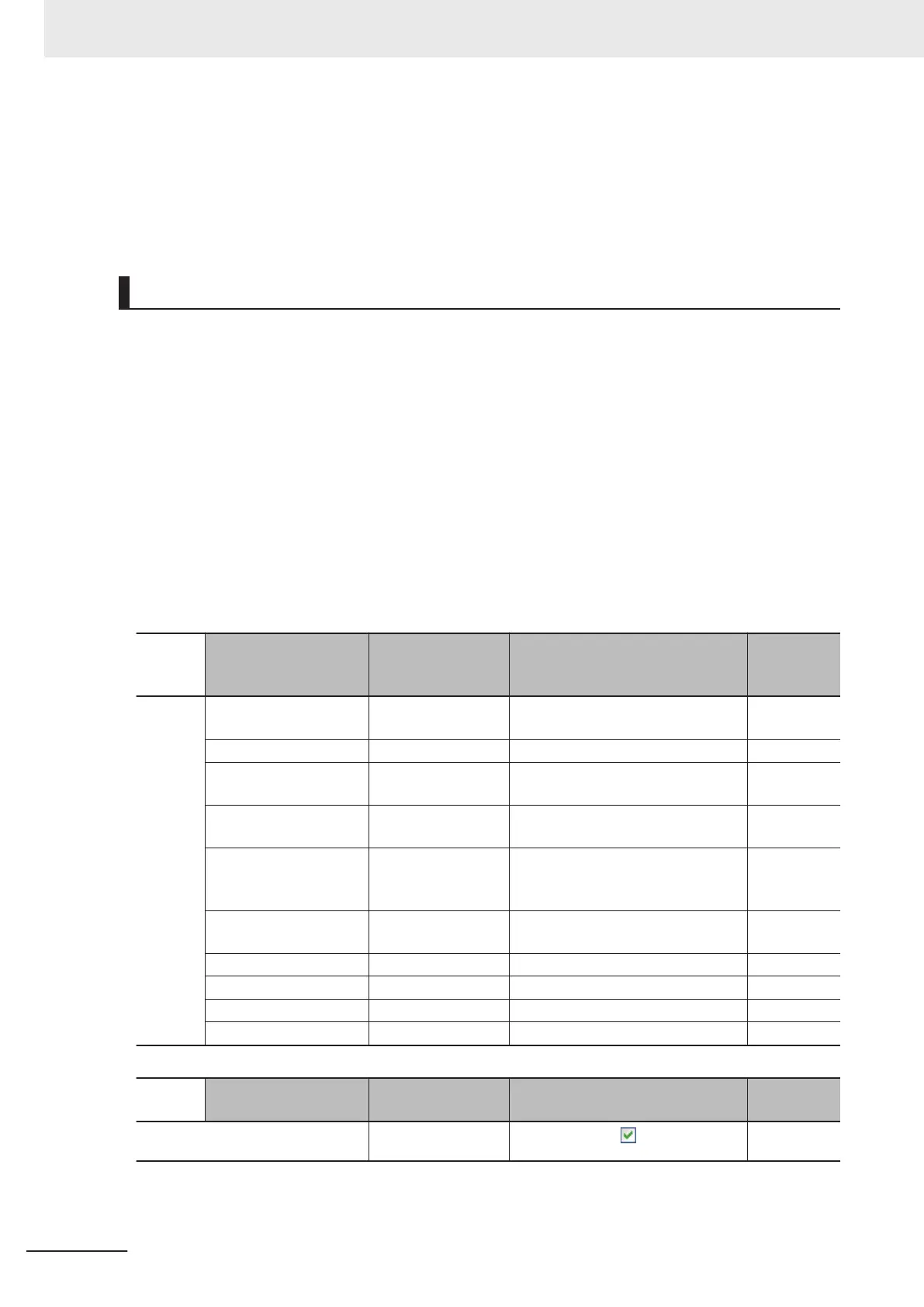DoTCP :=FALSE;
Trigger :=FALSE;
END_CASE;
END_IF;
Remote Node Programming
The processing procedure at the remote node is as follows:
1 The SktTCPAccept instruction is used to make a request to accept the connection on the TCP
socket.
2 The SktTCPRcv instruction is used to make a receive request. The received data is stored in
RcvSocketDat[].
3 The SktTCPSend instruction is used to make a send request The data in SendSocketDat[] is
sent.
4 The SktClose instruction is used to close the socket.
ST
Internal
varia-
bles
Variable Data type Initial value Comment
Trigger BOOL False Execution
condition
DoTCP BOOL False Processing
Stage INT 0 Status
change
RcvSocketDat ARRAY[0..1999] OF
BYTE
[2000(16#0)] Receive da-
ta
WkSocket _sSOCKET (Handle:=0, SrcAdr:=(PortNo:=0,
IpAdr:=''), DstAdr:=(PortNo:=0,
IpAdr:=''))
Socket
SendSocketDat ARRAY[0..1999] OF
BYTE
[2000(16#0)] Send data
SktTCPAccept_instance SktTCPAccept
SktTCPSend_instance SktTCPSend
SktTCPRcv_instance SktTCPRcv
SktClose_instance SktClose
External
variable
Variable Data type Constant Comment
_EIP_EtnOnlineSta
*1
BOOL Online
*1. For an NX701 CPU Unit and an NX102 CPU Unit, replace the variable with _EIP1_EtnOnlineSta (Port1 On-
line) or _EIP2_EtnOnlineSta (Port2 Online), depending on the built-in EtherNet/IP port which is used.
For an NX1P2 CPU Unit, replace the variable with _EIP1_EtnOnlineSta (Port1 Online).
9 Socket Service
9-26
NJ/NX-series CPU Unit Built-in EtherNet/IP Port User’s Manual (W506)

